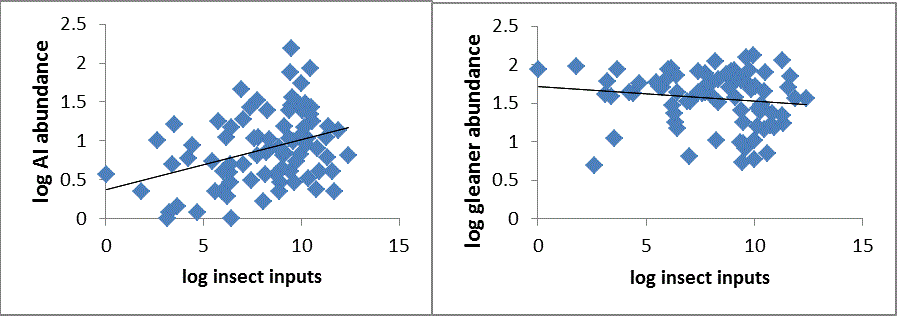Posted 01/7/16
The guild of aerial insectivore birds has experienced a long term decline in abundance, while other insectivore bird species have not. In this study, Paul found that aerial feeding birds depend strongly upon aquatic insect productivity, while surface-feeding insectivores did not. Paul hopes that this knowledge will contribute to better conservation plans for these declining species.
In an unusual twist, Paul Schilke’s interest in terrestrial birds has led him to study aquatic systems.

Many aerial insectivore bird species, such as swallows and flycatchers, have been declining since the 1980s, but researchers aren’t sure why because little is known about how these birds use the resources around them. This guild is defined by its habit of capturing flying insects in midair, as opposed to the gleaner guild that picks insects off of substrates like leaves or twigs. Many of these flying insects begin their lifecycle in aquatic systems, so Paul thought that the differential decline in the aerial feeding guild might lie in the lakes and streams.
Using records from 317 locations within the Chequamegon-Nicolet National Forest in Northern Wisconsin, Paul compared presence of the aerial and gleaner insectivore guild members to estimated insect productivity in nearby lakes and streams, controlling for habitat differences (Figure 1). He estimated insect probability using a model from Bartrons et al. (2013), which used an extensive meta-analysis to determine the relationships between aquatic insect productivity and basic properties of lakes and streams such as temperature, surface area, and clarity. As expected given their feeding behavior, gleaners preferred forested habitats while aerial insectivores preferred more open areas. Interestingly, despite both guilds being insectivorous, aerial feeders demonstrated a strong preference for sites with higher insect inputs, while gleaners had no response (Figure 2).

Paul hopes that a better understanding of the food resources of aerial insectivores can lead to better conservation measures, and hopefully reverse their long term decline. He will continue his work as a PhD student in the SILVIS lab.
Story by Andrew Allstadt
